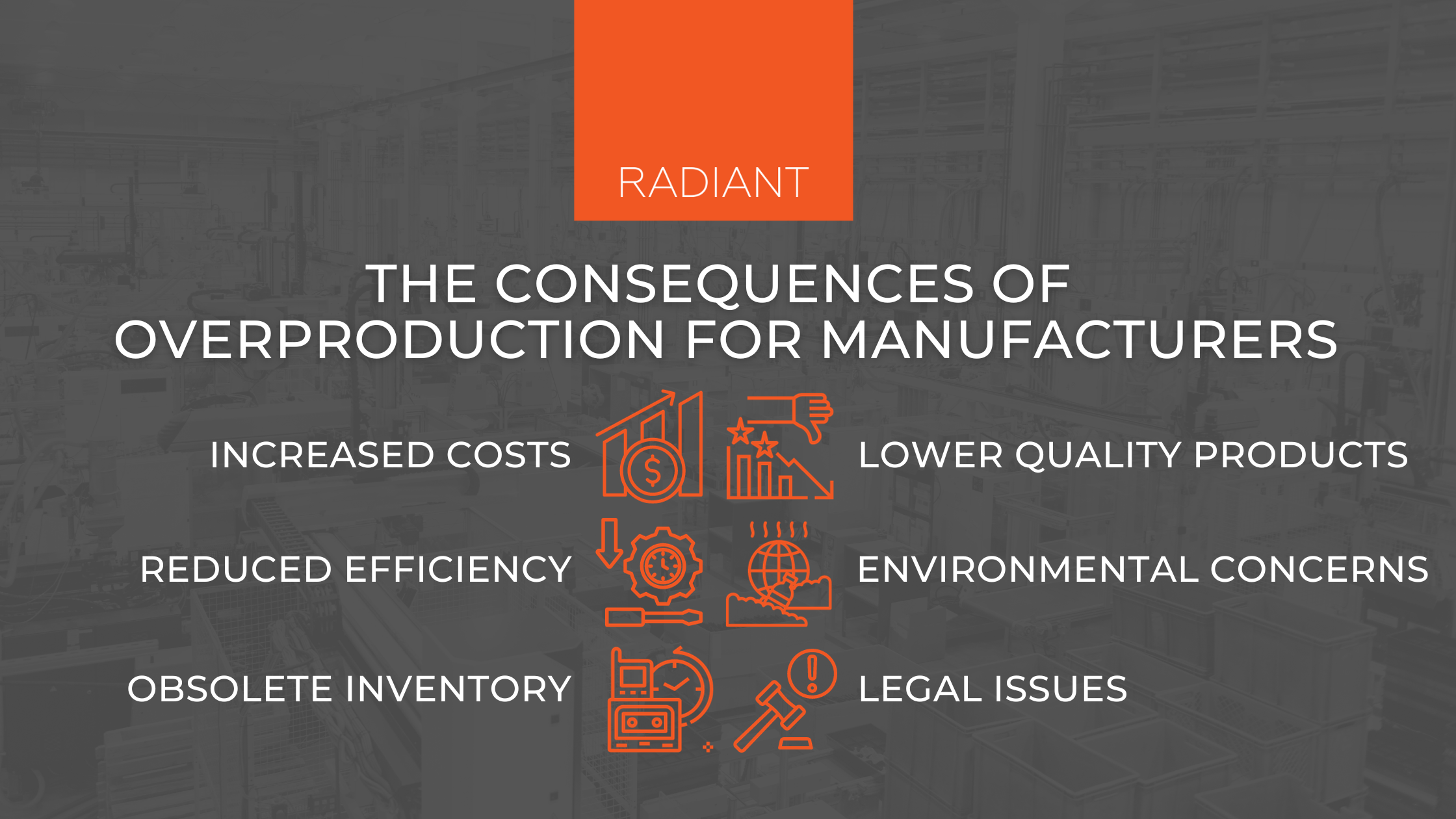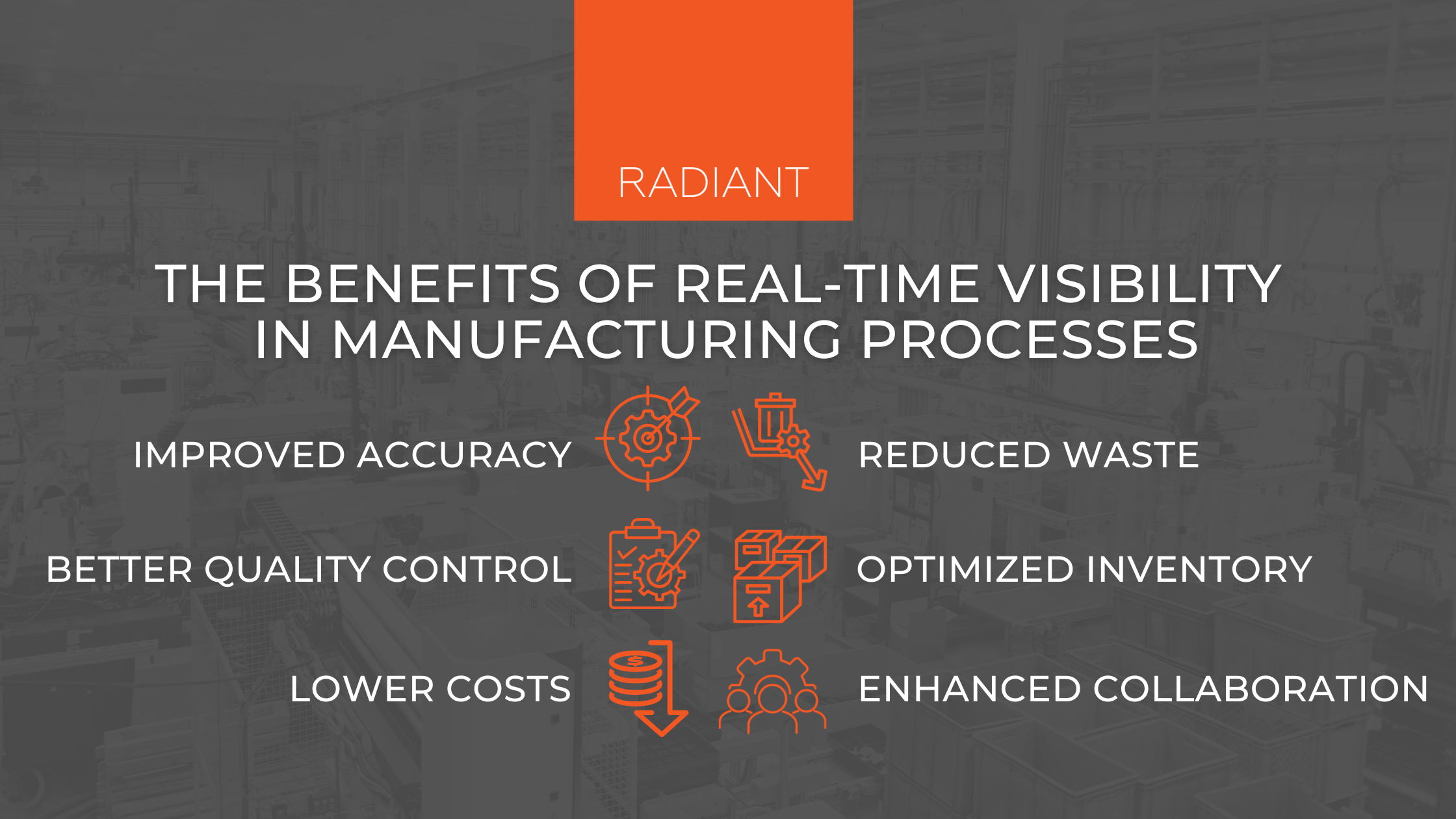Are you feeling overwhelmed by overproduction? It can be a common and costly issue for manufacturing businesses, but few people understand what causes it.
One of the most significant root causes of factory-wide inefficiency is an inability to track vital assets accurately and efficiently. By leveraging Internet of Things (IoT) solutions, manufacturers can gain real-time visibility into production processes and transform their operations from reactive to proactive.
Read on to learn more about how IoT asset tracking creates long-term efficiencies that lead to reduced levels of overproduction.
Defining Overproduction – Understanding Its Impact
Overproduction is a complex phenomenon that occurs when businesses manufacture more goods than demand requires. This issue can lead to enormous financial losses and a waste of resources, creating significant implications for businesses.
Understanding overproduction is crucial, and it is important to comprehend how lack of visibility in the production process causes this situation. Overproduction can cause a ripple effect, ultimately leading to environmental harm, decreased profitability, and increased costs.
However, by fully comprehending overproduction and its impacts, businesses can take necessary precautions to ensure the optimal use of resources and streamline processes for improved operational efficiency.
The Consequences of Overproduction for Manufacturers
Overproduction can wreak havoc on manufacturers who lack visibility in their supply chain operations. The consequences of this costly mistake can cause more headaches than anticipated:

- Increased Costs
One of the most significant consequences of overproduction for manufacturers is increased costs. When a manufacturer produces more than what is necessary, they are often left with excess inventory that must be stored or disposed of. This can result in higher storage and disposal costs for the manufacturer, as well as lost profits due to the inability to sell the excess inventory.
- Lower Quality Products
Another consequence of overproduction is lower-quality products. Manufacturers who produce too much may be forced to rush production, resulting in a decrease in quality control and an increase in defective products. This can lead to customer dissatisfaction and decreased sales, as well as costly product recalls and other liabilities.
- Reduced Efficiency
Overproduction can also reduce efficiency within manufacturing operations. Excess inventory can take up valuable space and resources, which can prevent manufacturers from efficiently producing new products or meeting customer demand in a timely manner. Additionally, if manufacturers are not able to move their excess inventory quickly enough, it can lead to cash flow issues that further impede efficiency.
- Environmental Concerns
Manufacturers who produce too much may also face environmental concerns due to their waste management practices. Excess inventory often requires additional packaging materials and transportation resources, which can result in increased emissions and other forms of pollution that negatively impact the environment. Additionally, disposing of large amounts of excess inventory may require hazardous materials that are harmful to the environment if not handled properly.
- Losses Due To Obsolescence
Manufacturers who produce too much may also face losses due to obsolescence if their products become outdated before they are able to sell them all off. This is especially true for technology companies, who must continually update their products in order to remain competitive in the marketplace and attract customers from other companies with newer offerings.
- Legal Issues
Finally, manufacturers who overproduce may face legal issues if they fail to meet certain safety standards or regulations when disposing of their excess inventory or waste materials related to production processes such as packaging and transportation.
With a lack of visibility, manufacturers can struggle to adjust production to demand, leading to wasted resources and missed opportunities. It’s crucial for manufacturers to remain mindful of these consequences and prioritize visibility to ensure success and efficiency.
Why a Lack of Visibility Leads to Excess Production
Imagine walking through a dimly lit room, trying to find your way without any source of light. Just like how a lack of visibility can make it difficult to navigate a physical space, it can also impact manufacturing processes.
When there is a lack of visibility in the production line, it becomes difficult for manufacturers to keep track of inventory levels and demand forecasts, leading to a tendency towards overproduction. In turn, overproduction can lead to excess waste and a drain on resources.
To truly excel in manufacturing, it is important to shine a light on the entire process, ensuring that everything is visible and accounted for. Only then can we produce only what we need, reducing waste and enhancing our overall efficiency.
Implementing IoT Solutions to Increase Transparency and Operational Efficiency
In a world of mass manufacturing, overproduction is a looming threat with disastrous consequences for the environment and economy. But the solution lies in increased transparency and efficiency. How can we achieve this, you ask? By implementing IoT solutions.
IoT asset tracking can take manufacturers to the next level by providing them with real-time data, enabling them to make informed decisions and eliminate inefficiencies in their supply chain.
Lack of visibility is often a significant hindrance in identifying overproduction, but with IoT solutions, manufacturers can track their production lines, monitor inventory levels, and even predict demand. This level of insight is priceless and can help manufacturers stay ahead of the game.
The bottom line is that implementing IoT solutions can help businesses increase accountability and visibility, leading to greater operational efficiency and more eco-friendly practices.
The Benefits of Real-Time Visibility in Manufacturing Processes
In today’s manufacturing world, real-time supply chain visibility is the key to success. And what better way to achieve it than by implementing IoT asset tracking solutions? By doing so, manufacturers can gain full control over their operations and enjoy a multitude of benefits.

- Improved Accuracy
Gaining real-time visibility into manufacturing processes can help to improve accuracy and reduce errors. With real-time data, manufacturers can quickly identify any discrepancies in production and take corrective action before they lead to costly mistakes or delays. This can help to ensure that the products being manufactured are of the highest quality and meet all customer specifications.
- Reduced Waste
Real-time visibility into manufacturing processes can also help to reduce waste by allowing manufacturers to more accurately track their materials and resources. By having a better understanding of what is being used in production and where it is going, manufacturers can optimize their processes for efficiency and minimize the amount of material that is wasted during production.
- Increased Quality Control
Real-time visibility into manufacturing processes also allows for increased quality control. By having access to detailed data on each step of the process, manufacturers can identify any potential issues before they become problems and take corrective action as needed. This helps to ensure that products are being manufactured according to the highest standards and are meeting all customer requirements.
- Optimized Inventory Management
Real-time visibility into manufacturing processes also enables manufacturers to optimize their inventory management practices. By having an up-to-date view of what materials are available, when they need to be replenished, and how much needs to be ordered, manufacturers can streamline their supply chain operations and reduce costs associated with excess inventory or stockouts.
- Lower Costs
By gaining real-time visibility into manufacturing processes, manufacturers can also lower costs associated with production by eliminating overproduction or unnecessary costs associated with inefficient production methods or materials usage. This helps them stay competitive in today’s market while still maintaining high levels of quality control and customer satisfaction.
- Enhanced Collaboration
Finally, real-time visibility into manufacturing processes enables enhanced collaboration between different departments within an organization as well as external stakeholders such as customers or suppliers. By having access to accurate data on every aspect of production, teams are able to work together more effectively towards common goals such as reducing costs or improving product quality.
In addition to the aforementioned, IoT asset tracking enables manufacturers to gain invaluable insights into their operations, which can help them make better-informed decisions, save time, and boost their bottom line.
With such solutions in place, manufacturers can enjoy greater agility, flexibility, and resilience, thereby staying ahead of the competition and delivering high-quality products that meet their customers’ expectations.
In short, IoT asset tracking is the future of manufacturing, and those who embrace it early on will benefit from a competitive edge that is hard to beat.
Eliminate Overproduction with Real-Time Visibility Through IoT Asset Tracking
Overall, modern manufacturers are faced with the constant challenge of overproduction due to a lack of visibility across their operations. By integrating real-time visibility and asset tracking solutions through IoT technology, manufacturers can take actionable steps to reduce excess production.
Visibility provides more accurate demand forecasts, allowing for better allocation of resources and a far more efficient manufacturing process. IoT asset tracking also offers extended supply chain visibility that is essential in combating overproduction.
True transparency means greater efficiency and higher profits for all stakeholders involved in the production cycle, saving time and resources for everyone involved. To start seeing the benefits of IoT asset tracking today, explore our solution and request your demo below.
Last Updated on October 19, 2023 by Radiant

